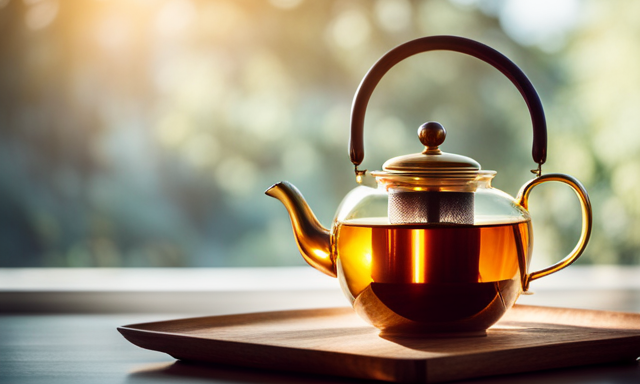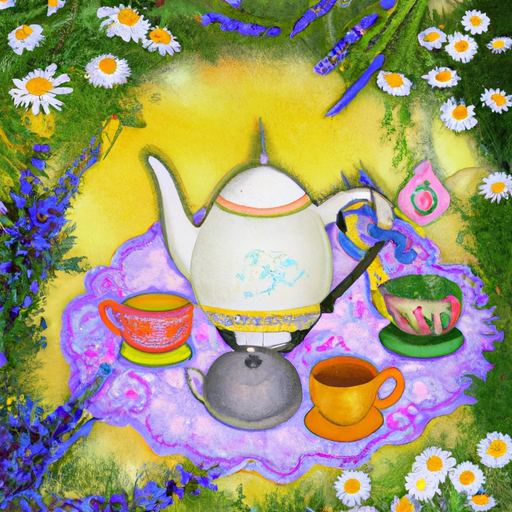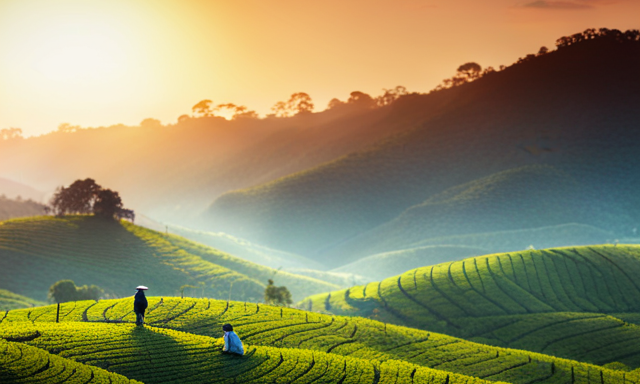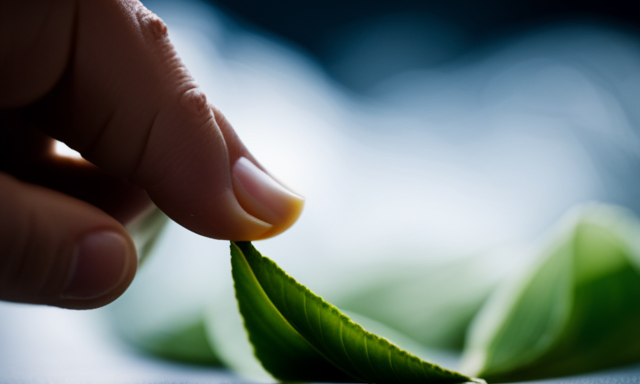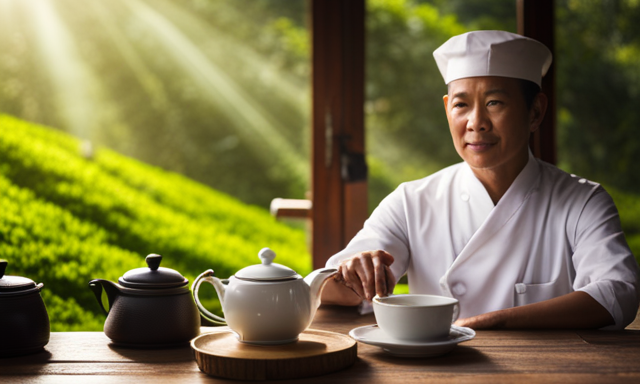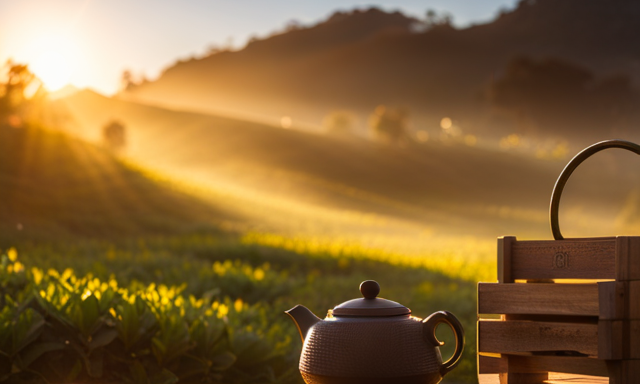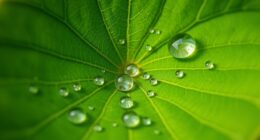Imagine a bright, sunny morning, the aroma of freshly brewed tea wafting through the air. As a tea enthusiast myself, I have always been captivated by the intricacies of brewing the perfect cup. Today, I want to delve into the world of oolong tea and explore a crucial aspect of its preparation: the temperature at which it should be brewed.
Oolong tea, known for its diverse flavors and unique characteristics, requires careful attention to temperature in order to unlock its full potential. From light and floral to rich and roasted, the temperature at which you brew your oolong tea can significantly impact its flavor profile.
In this article, we will discuss the various types of oolong tea, the role of temperature in shaping its taste, and the recommended brewing temperatures for different oolong varieties. Join me as we uncover the secrets to brewing the perfect cup of oolong tea and elevate your tea-drinking experience to new heights.
Key Takeaways
- Different types of oolong tea have different flavor profiles, with Taiwanese oolong teas being more floral and fruity, and Chinese oolong teas having a roasted and earthy taste.
- The temperature at which oolong tea is brewed impacts its flavor. Higher temperatures (around 195°F/90°C) result in a robust and bold flavor, while lower temperatures (around 165°F/74°C) bring out floral and fruity flavors with a lighter body.
- Recommended brewing temperatures for oolong tea vary depending on the type. Lighter oolong teas should be brewed at around 180°F (82°C) to preserve their floral and fruity notes, medium-bodied oolong teas at 190°F (88°C) to enhance creamy texture and nutty undertones, and dark oolong teas at 200°F (93°C) to extract rich roasted flavors and a robust character.
- Water quality is important in brewing oolong tea. Using filtered or spring water is recommended to ensure a clean and pure taste, as tap water may contain impurities that affect the flavor, and distilled water lacks essential minerals for a well-rounded brew.
Understanding the Different Types of Oolong Tea
Oolong tea comes in various types, each with their own unique characteristics and flavors. Understanding the different types of oolong tea is essential for getting the best brewing results.
The steeping techniques and origins of oolong tea play a significant role in its flavor profile. For example, Taiwanese oolong teas are known for their floral and fruity notes, while Chinese oolong teas tend to have a more roasted and earthy taste.
The temperature at which oolong tea is brewed also plays a crucial role in determining its flavor.
In the subsequent section, we will explore the influence of temperature on oolong tea flavor, allowing you to brew the perfect cup every time.
The Influence of Temperature on Oolong Tea Flavor
Begin by heating your water to the optimal temperature to enhance the complex flavors and aromas of this exquisite tea.
The temperature at which oolong tea is brewed greatly affects its flavor profile. Oolong tea is known for its delicate balance of floral, fruity, and toasty notes, and the brewing temperature can enhance or diminish these characteristics.
When brewed at a higher temperature, around 195°F (90°C), oolong tea tends to have a more robust and bold flavor with stronger roasted notes. On the other hand, brewing at a lower temperature, around 165°F (74°C), brings out the tea’s floral and fruity flavors while maintaining a lighter body.
Understanding the effects of temperature is crucial in mastering oolong tea brewing techniques. It sets the foundation for achieving the desired flavor profile.
Transitioning into the recommended temperature for brewing oolong tea, let’s explore the ideal brewing conditions.
Recommended Temperature for Brewing Oolong Tea
To truly unlock the intricate taste profile of oolong tea, it is crucial to brew it at the recommended temperature. The optimal temperature for brewing oolong tea typically ranges between 180°F (82°C) and 200°F (93°C). This range allows the leaves to slowly release their complex flavors without scorching them or extracting any unpleasant bitterness.
- 180°F (82°C): This lower end of the temperature spectrum is ideal for lighter oolong teas, preserving their delicate floral and fruity notes.
- 190°F (88°C): This slightly higher temperature is perfect for medium-bodied oolong teas, enhancing their creamy texture and nutty undertones.
- 200°F (93°C): The upper end of the range is best suited for dark oolong teas, extracting their rich, roasted flavors and robust character.
Maintaining the recommended brewing temperature guarantees a harmonious infusion, allowing the tea to fully express its unique nuances.
Now, let’s delve into the importance of water quality in brewing oolong tea.
Importance of Water Quality in Brewing Oolong Tea
When brewing oolong tea, it’s crucial to consider the quality of the water used. I always recommend using filtered or spring water to ensure a clean and pure taste.
Tap water should be avoided as it can contain impurities that may affect the flavor of the tea. Additionally, distilled water should be avoided as it lacks the minerals necessary for a well-rounded brew.
Finding the right mineral content in the water is key to achieving the perfect cup of oolong tea.
Using Filtered or Spring Water
Filtered or spring water is ideal for brewing oolong tea at the perfect temperature for three reasons.
-
Purity: Filtered water removes impurities like chlorine and heavy metals that can affect the taste of your tea. This ensures a clean and refreshing flavor profile.
-
Mineral Content: Spring water naturally contains minerals that can enhance the taste and aroma of oolong tea. These minerals add depth and complexity to each sip, elevating your tea-drinking experience.
-
Consistency: Using filtered or spring water ensures a consistent brewing temperature, which is crucial for extracting the full flavor potential of oolong tea. This results in a balanced and well-rounded cup every time.
By opting for filtered or spring water, you can enhance the quality of your oolong tea. However, it is important to avoid tap water and distilled water as they may contain contaminants or lack essential minerals.
Transitioning into the next section, let’s explore the reasons behind avoiding these water sources.
Avoiding Tap Water and Distilled Water
Using tap water or distilled water for brewing oolong tea is like adding a drop of disappointment to an ocean of flavor. Tap water often contains impurities that can alter the taste of your tea, while distilled water lacks the essential minerals that contribute to its unique character. To ensure the best brewing experience, it’s essential to avoid these options and explore alternative choices. One alternative is using filtered or spring water, which helps maintain the delicate balance of flavors in your oolong tea. Additionally, choosing the right brewing vessel can make a significant difference. Consider using a ceramic or clay teapot, as they retain heat well and enhance the tea’s aromas. By avoiding tap water and exploring alternative options, you can elevate your oolong tea experience. Now, let’s move on to finding the right mineral content for your brew.
Finding the Right Mineral Content
When it comes to brewing oolong tea, the choice of water is crucial. As we discussed earlier, both tap water and distilled water should be avoided due to their potential negative impact on the taste and aroma of the tea. Instead, it is important to find the right mineral content in the water for optimal brewing.
Finding the ideal brewing time for oolong tea can be a matter of personal preference. Some people prefer a shorter infusion for a lighter flavor, while others enjoy a longer steeping time for a more robust taste. It is recommended to experiment with different brewing times to find the perfect balance that suits your taste buds.
In addition to the brewing time, the choice of brewing vessel can also affect the flavor profile of the tea. Different vessels, such as clay pots or porcelain teapots, can enhance or mellow out certain characteristics of the oolong tea.
Now that we have explored the importance of water and brewing time, let’s delve into the various brewing methods for oolong tea.
Brewing Methods for Oolong Tea
For the perfect cup of oolong tea, all you need is to know the ideal brewing temperature. When it comes to brewing oolong tea, there are various techniques and tea utensils that can be used. The brewing method you choose can greatly impact the taste and aroma of the tea.
To achieve the best results, it is important to use water at the right temperature. Oolong tea is typically brewed at a temperature between 185°F to 205°F (85°C to 96°C). This temperature range allows the tea leaves to unfurl and release their flavors without becoming bitter. It is essential to pay attention to the water temperature to avoid under or over-extracting the tea.
Now that we have discussed the brewing methods and tea utensils, let’s move on to the next section about steeping time and number of infusions.
Steeping Time and Number of Infusions
When it comes to brewing oolong tea, it’s not just about the temperature and brewing methods, but also about the steeping time and number of infusions. These factors can greatly influence the flavor profile of the tea. Oolong tea is known for its complex flavors, and the steeping techniques can help bring out its unique characteristics.
To achieve the perfect cup, it is recommended to steep oolong tea for 3-5 minutes, depending on the desired strength. However, this can vary depending on the specific type of oolong tea you are brewing. Some oolong teas can be steeped multiple times, with each infusion bringing out different flavor notes. This allows you to fully explore the depth and complexity of the tea.
Now that we have covered steeping time and number of infusions, let’s move on to the next section about tips for enhancing the oolong tea experience.
Tips for Enhancing the Oolong Tea Experience
To fully savor the rich flavors and discover the hidden depths of oolong tea, let your taste buds embark on a tantalizing journey that will transport you to a world of aromatic wonders.
Enhancing the aroma of oolong tea can elevate your tea drinking experience to new heights. One technique is to warm the tea cups beforehand, allowing the aroma to be released more effectively. Another way is to inhale the scent of the tea leaves before steeping, taking in the subtle nuances and hints of fragrance.
When tasting oolong tea, take small sips and let the tea linger in your mouth, allowing the flavors to unfold. Pay attention to the balance of sweetness, bitterness, and astringency.
Lastly, be mindful of the temperature of the water used for brewing, as it can affect the aroma and taste.
Now, let’s explore how to store oolong tea properly.
Storing Oolong Tea Properly
Discover the secret to preserving the rich flavors and delicate aroma of oolong tea by storing it properly.
Storing oolong tea is crucial to maintaining its freshness and ensuring a quality drinking experience. To preserve the tea’s flavors, it should be stored in an airtight container away from light, moisture, and strong odors.
The container should be opaque to prevent sunlight from affecting the tea. It is also recommended to keep the tea away from spices and other strong-smelling items that may permeate the leaves.
Proper storage will help to maintain the tea’s freshness for a longer period.
Now, let’s move on to the next section about pairing oolong tea with food.
Pairing Oolong Tea with Food
Enhance your culinary experience by exploring the delightful art of pairing oolong tea with delectable dishes.
Oolong tea, with its unique flavor profile, can be a wonderful complement to a wide range of desserts. The rich and complex notes of oolong tea harmonize beautifully with sweet treats like pastries, cakes, and chocolates. The natural sweetness of oolong tea can enhance the flavors of these desserts, creating a truly indulgent experience.
In addition to its taste, oolong tea also offers numerous health benefits. It is packed with antioxidants that can boost your immune system and promote overall well-being. So, not only can you satisfy your sweet tooth with a delectable dessert paired with oolong tea, but you can also enjoy the added benefits of this healthy beverage.
Oolong Tea as a Healthy Beverage
Oolong tea is not only a delicious beverage, but it also offers a range of health benefits.
One of the key points to consider is its antioxidant properties, which can help protect the body against free radicals and reduce the risk of chronic diseases.
Additionally, oolong tea has been shown to promote digestive health by improving gut function and reducing inflammation.
Lastly, it can also boost metabolism and aid in weight loss, making it a great choice for those looking to maintain a healthy weight.
Antioxidant Properties of Oolong Tea
One fascinating aspect of oolong tea is its ability to boost antioxidant levels in the body. Antioxidants are essential for maintaining overall health and protecting the body against harmful free radicals.
Oolong tea is rich in polyphenols, which are powerful antioxidants that help reduce oxidative stress and inflammation. Studies have shown that regular consumption of oolong tea can have numerous benefits for heart health. The antioxidants in oolong tea help improve blood flow, reduce cholesterol levels, and lower the risk of cardiovascular diseases. These antioxidant properties make oolong tea a great choice for those looking to improve their heart health.
Moving on to promoting digestive health, oolong tea also offers a range of benefits for maintaining a healthy digestive system.
Promoting Digestive Health
After discussing the antioxidant properties of Oolong tea, let’s now delve into its benefits for promoting digestive health. Oolong tea is known for its ability to support gut health and relieve digestive discomfort.
When consumed regularly, Oolong tea can promote a healthy digestive system by soothing inflammation and reducing the risk of digestive disorders. It aids in the digestion of fats and enhances the absorption of nutrients, ensuring proper assimilation of food.
To fully comprehend the significance of Oolong tea in promoting gut health, let’s explore its effects through three sub-lists:
- Calming properties: Oolong tea has calming effects on the digestive system, reducing bloating and indigestion.
- Antimicrobial properties: Oolong tea can help kill harmful bacteria in the gut, promoting a healthy balance of gut flora.
- Anti-inflammatory effects: Oolong tea contains compounds that reduce inflammation, relieving digestive discomfort.
With its ability to promote digestive health and relieve discomfort, Oolong tea sets the stage for our next discussion on how it can aid in boosting metabolism and weight loss.
Boosting Metabolism and Weight Loss
By incorporating Oolong tea into my daily routine, I can experience a revved-up metabolism, likened to the energizing sensation of a roaring engine, propelling me towards my weight loss goals.
Oolong tea is known to boost energy levels and kickstart the body’s fat-burning process. It contains polyphenols, which activate certain enzymes that enhance the metabolism and help manage blood sugar levels. These polyphenols also increase fat oxidation and improve insulin sensitivity, making Oolong tea a valuable tool for weight loss.
Additionally, the caffeine content in Oolong tea stimulates the nervous system, further enhancing metabolism and increasing calorie expenditure.
Incorporating Oolong tea into my daily routine can provide a natural and effective way to boost metabolism and support weight loss efforts.
Frequently Asked Questions
How long should I steep oolong tea for?
To steep oolong tea, follow these steps: 1) Consider the different flavors and varieties of oolong tea to choose the best one for brewing. 2) Steep for the recommended time, usually 3-5 minutes, to ensure the perfect balance of flavors.
Can I reuse the tea leaves for multiple infusions?
Yes, you can reuse oolong tea leaves for multiple infusions. To do this, adjust your steeping techniques by adding more time for each subsequent infusion. Make sure to use hot water for the best results.
What is the recommended water-to-tea ratio for brewing oolong tea?
To maximize the flavor, I recommend using a water-to-tea ratio of 1:2 for oolong tea. This ensures a strong, balanced brew. To further enhance your experience, follow the recommended steeping time and employ the best brewing techniques.
Should I use filtered water or tap water to brew oolong tea?
For brewing oolong tea, I recommend using filtered water instead of tap water. The quality of water affects the taste, and filtered water helps to remove impurities. Additionally, the water temperature does impact the taste of oolong tea.
Can I drink oolong tea if I have certain health conditions or take medications?
Drinking oolong tea can affect blood pressure and blood sugar levels, so it’s important to consult with a healthcare professional if you have hypertension or diabetes before incorporating it into your diet.
Conclusion
In conclusion, brewing oolong tea at the right temperature is crucial in order to fully appreciate its unique flavor profile. By understanding the different types of oolong tea and the influence of temperature on its taste, we can ensure a perfect brew every time.
Remember to use high-quality water and experiment with different brewing methods to find your preferred cup of oolong.
So go ahead, indulge in this healthy beverage that’s been enjoyed for centuries, and let its aroma and taste transport you to a serene tea garden, where tranquility and pleasure await.

